Plants to Keep Bugs Away Naturally keeping pests at bay can be one of the biggest challenges for gardeners and homeowners alike. Whether you’re trying to protect your vibrant vegetable garden or simply want to enjoy bug-free evenings on the patio, chemical pesticides can feel like an easy fix.
But they often come with drawbacks—unwelcome environmental impact, potential harm to beneficial insects, and even health risks for pets and people.
What if there was a natural way to repel bugs while enhancing your garden’s beauty and sustainability? Enter bug-repelling plants. These powerhouse greens are nature’s repellents, warding off mosquitoes, flies, and other pests while blending seamlessly into your landscape or home decor.
This guide explores 12 incredible plants that not only repel bugs naturally but also add charm to your space.
The Benefits of Natural Pest Control:
Before digging into the details of bug-repelling plants, it’s worth understanding why natural pest control makes a compelling choice over traditional methods like sprays and traps.
Environmental and Health Advantages:
Natural pest control methods, like using plants, are free of the toxic chemicals often found in conventional pesticides. These toxins can harm local ecosystems, kill beneficial pollinators like bees and butterflies, and even adversely affect pets and children who come into contact with treated areas.
Cost-Effective and Sustainable:
Plants do double duty—they beautify your space while keeping pests away, saving you from spending extra on store-bought repellents. Plus, planting your own pest-control solution is a sustainable option that contributes to greener living.
How Plants Repel Bugs:
It might surprise you to learn that many common plants are experts at deterring bugs. The secret lies in the scents and oils they emit.
Certain plants contain volatile compounds like citronellal, limonene, and thymol, which create aromas that are unpleasant to pests. These compounds can act as natural irritants, masking other scents bugs use to track prey or disrupting their physical contact with the area. Some plants deter mosquitoes, while others work against flies, aphids, or even fleas.
The Top 12 Bug-Repelling Plants: Plants to Keep Bugs Away Naturally!
1. Lavender (Lavandula angustifolia)
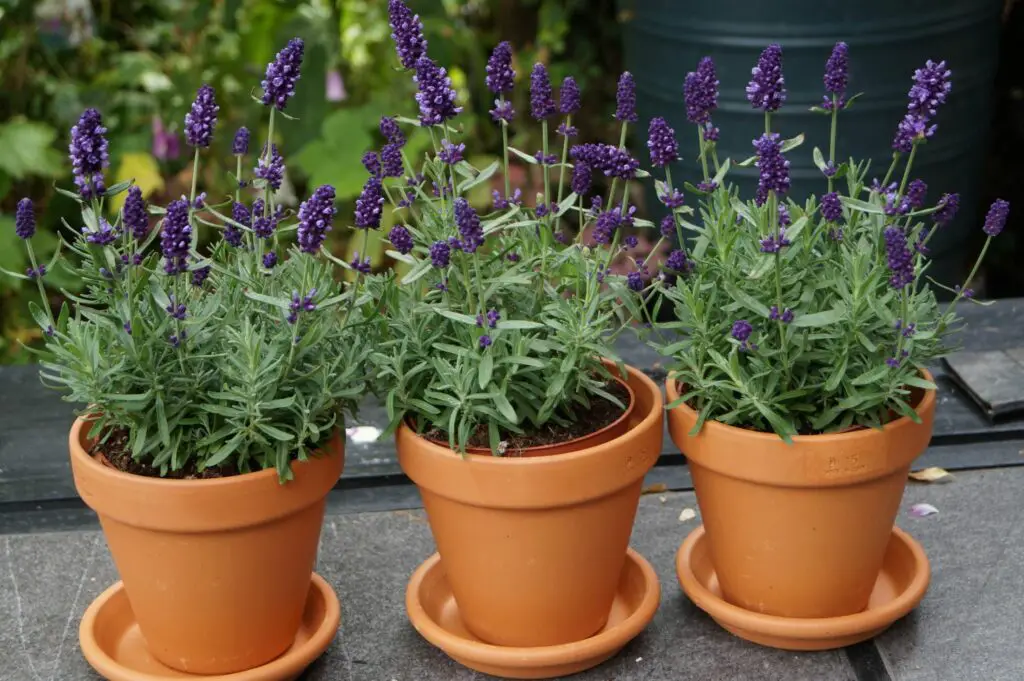
Native to the Mediterranean region, lavender is highly regarded for its versatile properties and fragrant blooms. Its ability to repel pests stems from the high concentration of linalool and linalyl acetate found in its essential oils. These compounds are particularly effective against mosquitoes, moths, and fleas.
To maximize lavender’s pest-deterring benefits, plant it in sunny areas with well-drained soil. Additionally, dried lavender bundles can be placed indoors, in closets, or near windows to keep unwanted insects at bay. For personal protection, lavender essential oil can be diluted and applied to the skin or mixed into homemade sprays for a natural bug repellent.
- Repels: Mosquitoes, flies, fleas, moths
- Ideal Conditions: Likes full sun and well-drained soil.
With its soothing fragrance, lavender doesn’t just keep bugs away—it’s also a favorite for aromatherapy.
2. Citronella Grass (Cymbopogon nardus)
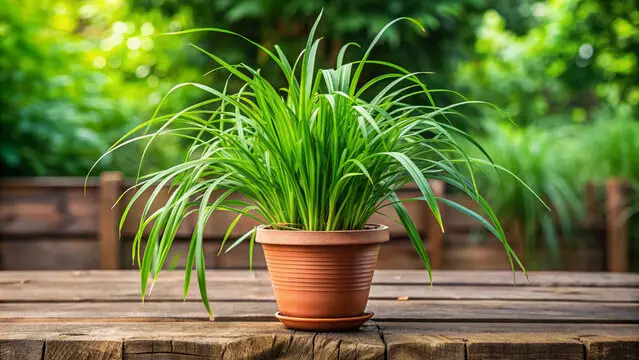
Citronella grass is well-known for its potent ability to repel pests, thanks to the strong citrus-like aroma it releases. This plant contains natural oils, particularly citronellal, which is highly effective in masking the scents that attract insects like mosquitoes. Citronella grass can be grown in large pots or directly in the ground, making it versatile for both indoor and outdoor use.
It thrives best in warm climates with plenty of sunlight, though it can be grown in partial shade as well. Regular watering is necessary, but the soil should be well-draining to avoid root rot.
For practical use, the leaves of citronella grass can be crushed to release the oils, which can then be applied to the skin or infused in water to create sprays. Additionally, the essential oil derived from citronella grass is a common ingredient in candles, lotions, and other insect-repellent products, offering a natural and effective alternative to chemical repellents.
- Repels: Mosquitoes, flies, ants
- Ideal Conditions: Prefers warm climates, full to partial sun, and well-drained soil.
Not only is citronella grass functional, but it also adds a touch of lush greenery to gardens and patios, making it a visually appealing and practical choice for pest control.
A popular ingredient in many bug sprays, this tall grass thrives in warm climates.
3. Marigold (Tagetes spp.)

Marigolds are vibrant, hardy flowers that are well-known for their pest-deterring properties, making them a gardener’s favorite for integrated pest management. These flowers are particularly effective at repelling nematodes, aphids, mosquitoes, and even tomato hornworms, thanks to the natural compounds they release, such as thiophene.
Marigolds thrive in a variety of conditions but prefer full sun and well-drained soil to grow optimally. They are highly adaptable and come in various sizes and colors, ranging from bright yellows to deep oranges, which can add a burst of color to garden beds or borders. Additionally, planting marigolds alongside vegetables or herbs can enhance companion planting strategies to protect crops from infestations.
For the best results, it is recommended to deadhead spent flowers regularly to encourage continuous blooming throughout the growing season.
- Repels: Aphids, mosquitoes, and whiteflies
- Ideal Conditions: Enjoys full sun and low-maintenance care.
Marigolds release a fragrance disliked by multiple pests, making them fantastic for vegetable gardens.
4. Basil (Ocimum basilicum)
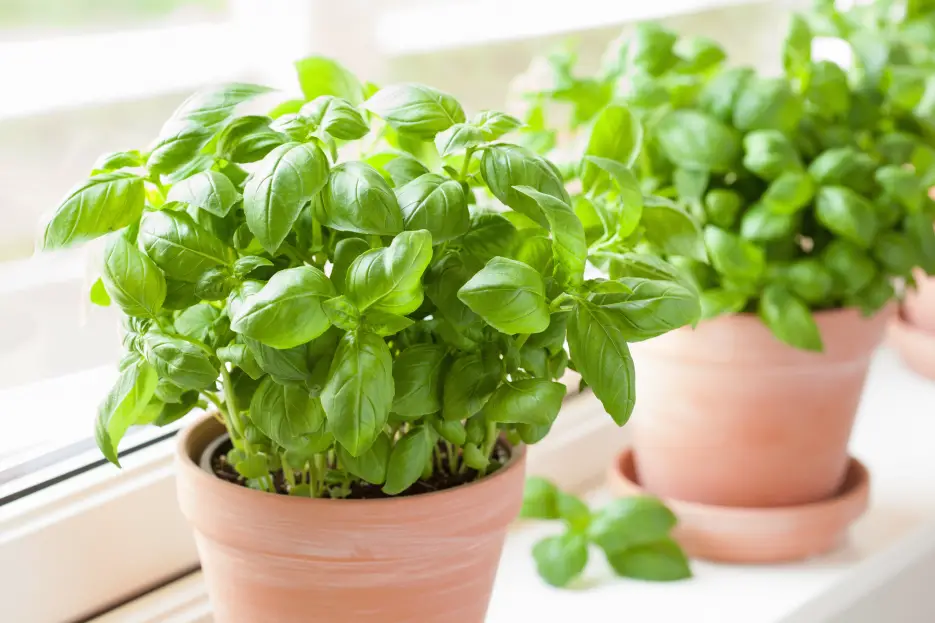
Basil is a versatile herb often chosen for its culinary uses, but it also plays a significant role in companion planting. Known for its strong, aromatic scent, basil helps to deter common garden pests such as aphids, whiteflies, and hornworms.
Additionally, planting basil near tomatoes has a synergistic effect, as it can improve tomato flavor and growth while providing natural protection against harmful insects. Basil thrives in warm weather, preferring well-drained soil and consistent moisture. Regular pruning and harvesting not only encourage healthy growth but also prevent the plant from bolting, ensuring a longer lifespan.
For optimal results, basil should be paired with other compatible crops such as peppers, asparagus, or oregano. Its ability to repel pests while enhancing the garden’s productivity makes it a valuable addition to any planting strategy.
- Repels: Flies, mosquitoes
- Ideal Conditions: Requires full sun and moist soil.
Not only does basil enhance your recipes, but its pungent fragrance is a natural insect shield.
5. Rosemary (Salvia rosmarinus)
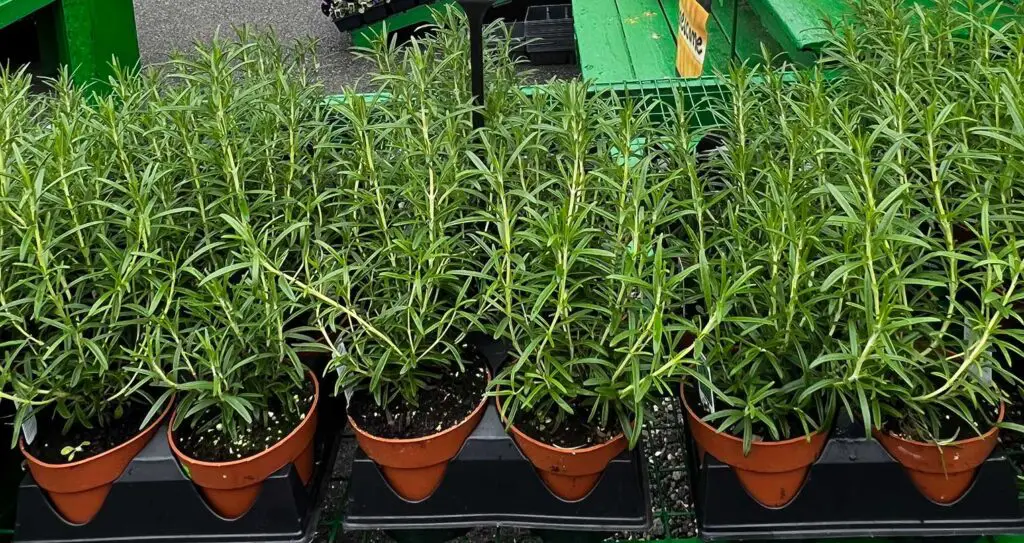
Rosemary is a hardy, perennial herb that thrives in a variety of settings, making it a versatile choice for experienced and novice gardeners alike. Known for its aromatic foliage, rosemary not only adds flavor to culinary dishes but also serves as an effective pest deterrent in the garden.
This herb grows best when planted near crops like cabbage, beans, and carrots, as it can help protect these plants from common pests. Additionally, rosemary benefits from occasional pruning, which encourages bushy, robust growth. Regular harvesting of its stems can further promote plant health and ensure a steady supply of fresh rosemary for cooking and other uses.
Apart from its culinary and pest-repellent uses, its fragrant presence is also known to attract pollinators like bees, enriching the biodiversity of the garden.
- Repels: Cabbage moths, carrot flies, bean beetles
- Ideal Conditions: Prefers well-drained, sandy soil and full sun. Tolerates drought once established.
Rosemary’s needle-like leaves are packed with aromatic oils that pests dislike.
Related Topics:
6. Mint (Mentha spp.)
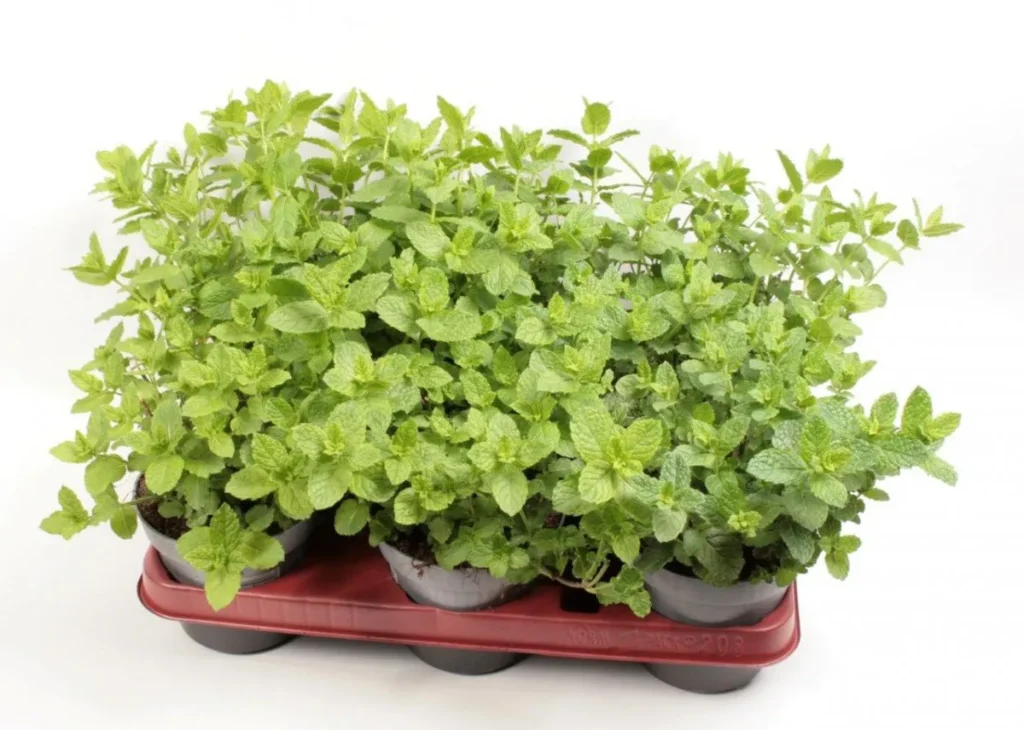
Mint is an incredibly versatile herb that not only serves as an effective natural pest deterrent but also provides culinary and medicinal benefits. Its strong aroma is particularly unpleasant to ants, spiders, and mosquitoes, making it a popular choice for borders or areas near patios where pests might gather.
However, its aggressive spreading nature must be managed carefully to prevent it from overtaking other plants. One effective solution is planting mint in containers to control its growth while still taking advantage of its pest-repellent properties. Regular pruning can also help maintain its shape and ensure healthy growth.
Additionally, mint thrives best in soil that is consistently moist but not waterlogged, and it benefits from mulch to retain humidity in hotter climates. This hardy herb is easy to propagate from cuttings, offering gardeners an inexpensive way to expand their garden while fortifying it against common pests.
- Repels: Ants, spiders, mosquitoes
- Ideal Conditions: Needs partial shade and moist soil but can spread aggressively.
Keep mint in pots to control its growth while enjoying pest-free surroundings.
7. Lemongrass (Cymbopogon citratus)
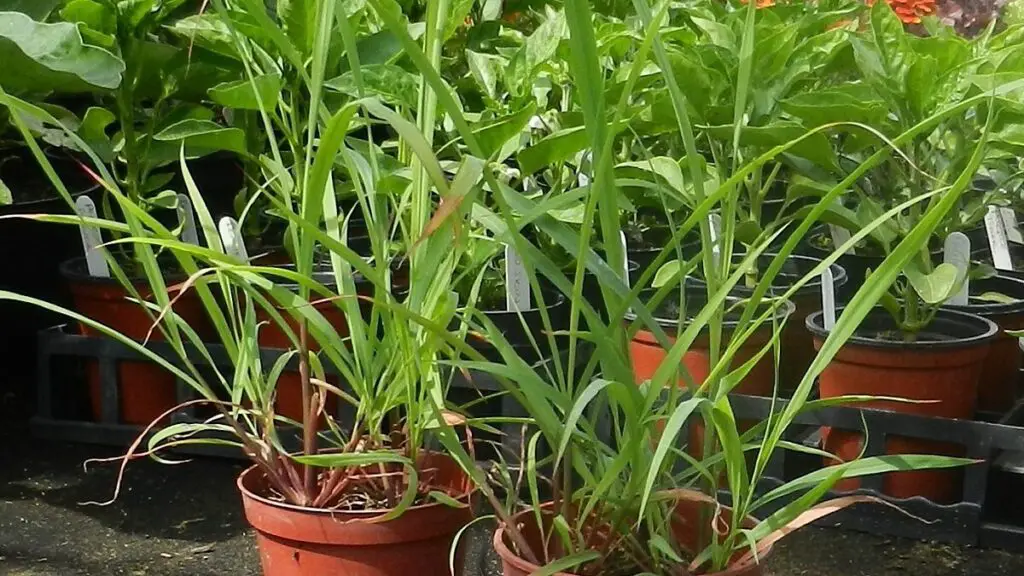
Lemongrass is a fast-growing, aromatic plant that thrives in warm climates and serves a dual purpose in the garden as both a pest deterrent and a culinary ingredient. This tropical grass requires well-drained, slightly acidic soil and abundant sunlight to grow vigorously. Regular watering is essential, but ensure the soil does not become waterlogged, as this can lead to root rot.
Apart from its pest-repelling properties, lemongrass attracts beneficial insects, such as pollinators, which can improve the overall health of your garden. It is especially effective at repelling mosquitoes, making it a popular choice for home landscapes in mosquito-prone regions.
To maintain its health and productivity, regularly prune the leaves to encourage new growth and prevent overcrowding. Whether you are using it for its refreshing citrus flavor in your cooking or as a natural pest repellant, lemongrass is a versatile addition to any garden.
- Repels: Mosquitoes
- Ideal Conditions: Prefers a warm climate, full sun, and well-drained soil.
Lemongrass is related to citronella and equally effective at keeping mosquitoes at bay.
8. Chrysanthemum (Chrysanthemum spp.)
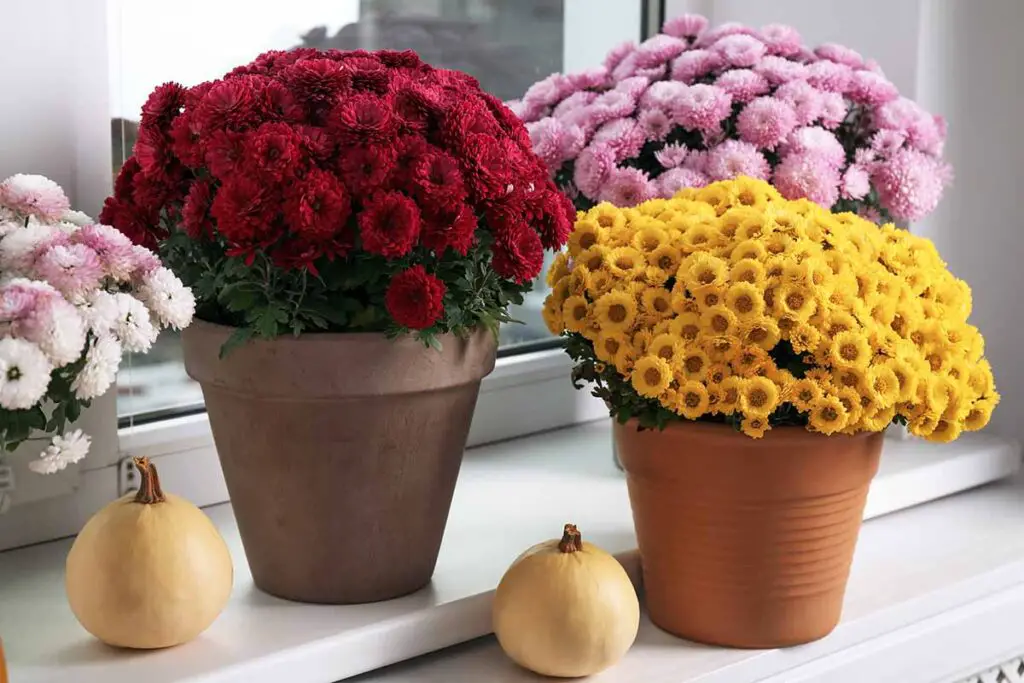
Chrysanthemums, commonly referred to as mums, are celebrated for their vibrant blooms and their ability to repel pests, making them an excellent choice for any garden. They produce a natural compound called pyrethrin, which is highly effective against a wide range of insects, including ants, roaches, ticks, and fleas.
For optimal growth, chrysanthemums require well-drained soil, consistent watering, and placement in full sun to achieve their energetic blossoms. Regular deadheading of spent flowers will encourage continual blooming and maintain their attractive appearance.
Additionally, these flowers are not only practical for pest control but also enhance gardens with their rich variety of colors, including oranges, yellows, purples, and whites. When planting chrysanthemums, spacing them to allow adequate air circulation will help prevent any fungal diseases, ensuring your plants remain healthy and robust throughout the season.
- Repels: Roaches, ants, ticks, fleas
- Ideal Conditions: Needs partial sunlight and frequent watering.
Chrysanthemums produce pyrethrins, a natural insecticide that’s particularly effective at repelling pests.
9. Petunias (Petunia spp.)
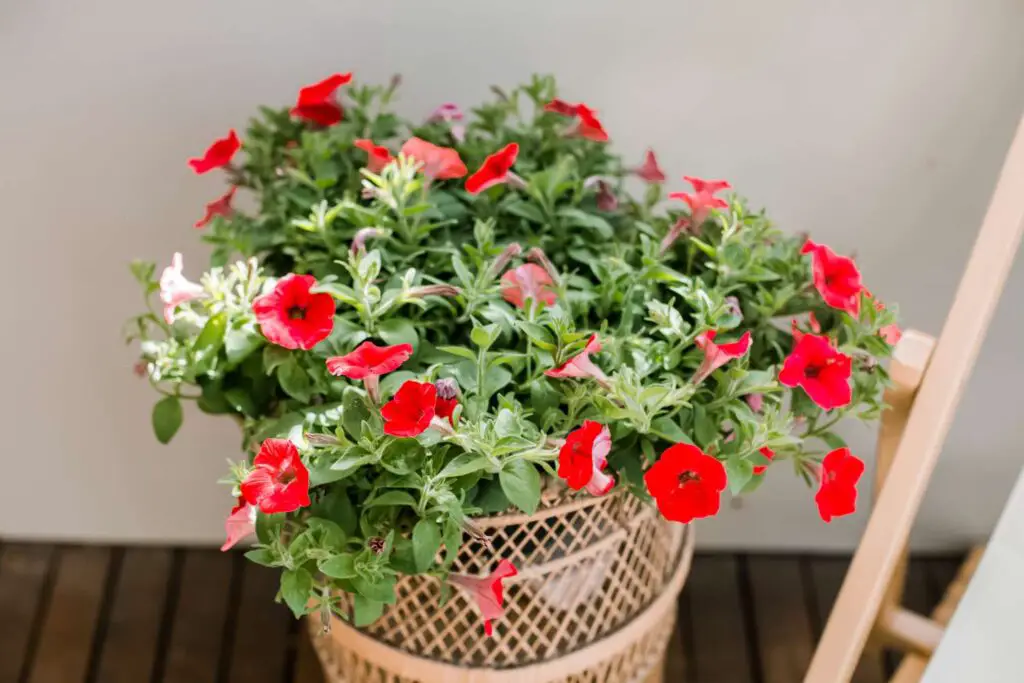
These vibrant and versatile flowers are a favorite among gardeners due to their wide variety of colors, ease of care, and ability to thrive in both garden beds and containers. Petunias are known for their funnel-shaped blooms, which come in shades ranging from pinks and purples to whites and reds, often with striking patterns or veining.
They are not only aesthetically pleasing but also serve as a natural pest deterrent, helping to keep aphids, squash bugs, and tomato hornworms away from nearby plants. To ensure optimal growth, petunias require full sun, well-drained soil, and moderate watering, making them a low-maintenance yet impactful addition to any garden.
Regular deadheading of spent blooms encourages continuous flowering throughout the growing season.
- Repels: Aphids, beetles, leafhoppers
- Ideal Conditions: Low-maintenance and thrives in full sun.
These colorful blooms are a beautiful and practical addition to any garden.
10. Catnip (Nepeta cataria)
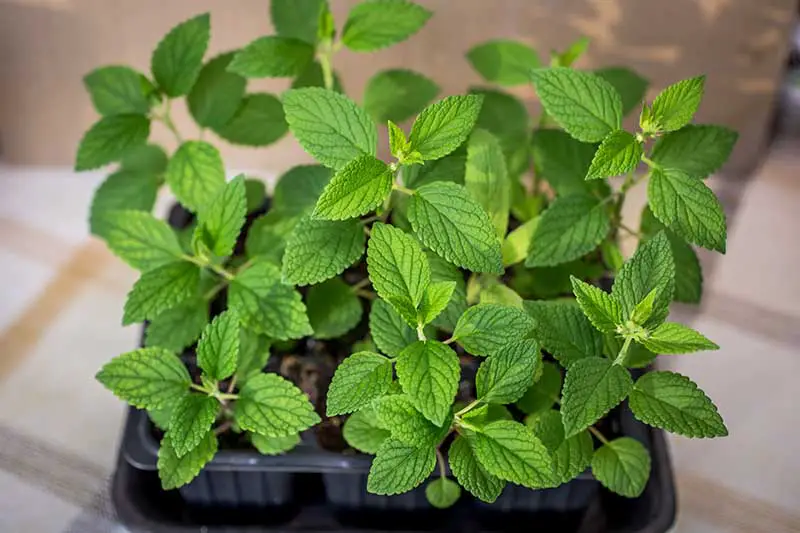
Catnip (Nepeta cataria) is a highly aromatic perennial herb that belongs to the mint family. Known for its ability to attract cats due to the compound nepetalactone, this plant is also useful in the garden for its pest-repelling properties. Catnip effectively deters mosquitoes, flies, and even cockroaches, making it a natural solution for controlling unwanted insects.
This hardy plant thrives in full sun to partial shade and prefers well-drained soil with minimal watering once established. To maintain its shape and encourage healthy growth, catnip benefits from regular pruning. Additionally, its small, lavender-blue flowers add a soft touch to garden spaces, and the plant’s drought tolerance makes it an excellent choice for low-maintenance gardens.
Catnip is not only a favorite for feline companions but also a valuable ally for gardeners seeking an environmentally-friendly pest management solution.
- Ideal Conditions: Thrives in full sun or partial shade with well-drained soil.
- Repels: Mosquitoes, cockroaches
Catnip contains nepetalactone, a compound found to be stronger than commercial repellents in some cases.
11. Sage (Salvia officinalis)
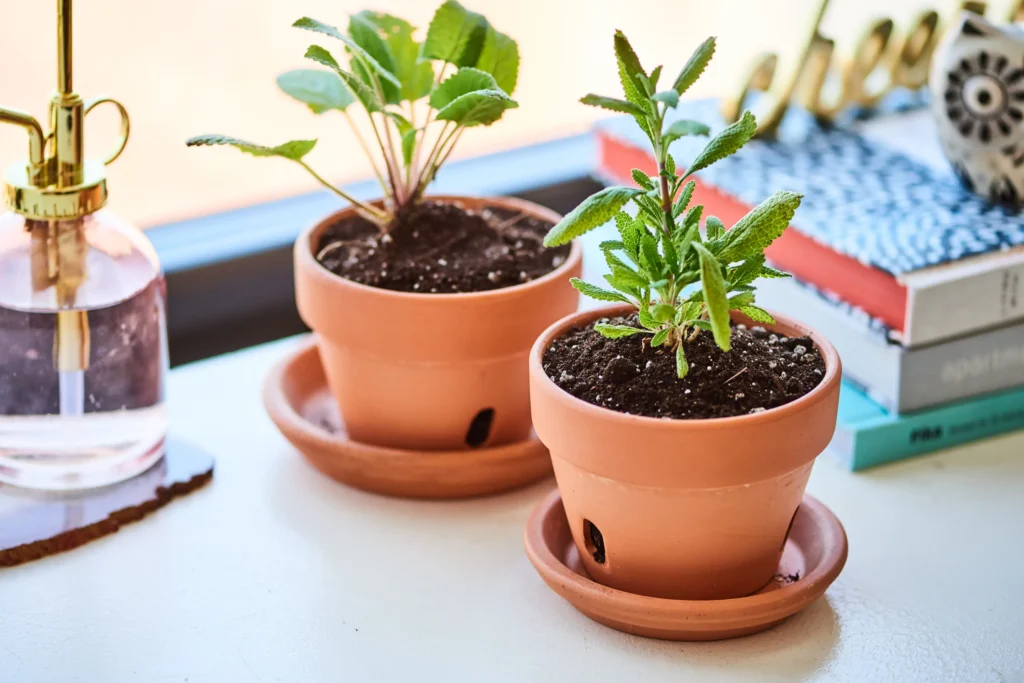
Sage, a perennial herb renowned for its culinary and medicinal properties, also serves as a robust natural pest deterrent. Its strong, earthy aroma is effective in repelling common garden pests such as cabbage moths, carrot flies, and aphids, making it a valuable addition to any eco-conscious garden.
Beyond its pest-repellent qualities, sage is drought-tolerant and thrives in a variety of conditions, making it adaptable for gardeners in different climates.
- Ideal Conditions: Requires full sun and well-drained soil for optimal growth.
- Repels: Cabbage moths, carrot flies, aphids
- Companion Planting: Excellent when planted alongside carrots, broccoli, and cabbage to protect these crops from harmful pests.
Rich in essential oils, sage leaves can also be harvested and dried for homemade pest-repellent solutions, offering gardeners a sustainable and affordable option to combat infestations.
12. Thyme (Thymus vulgaris)
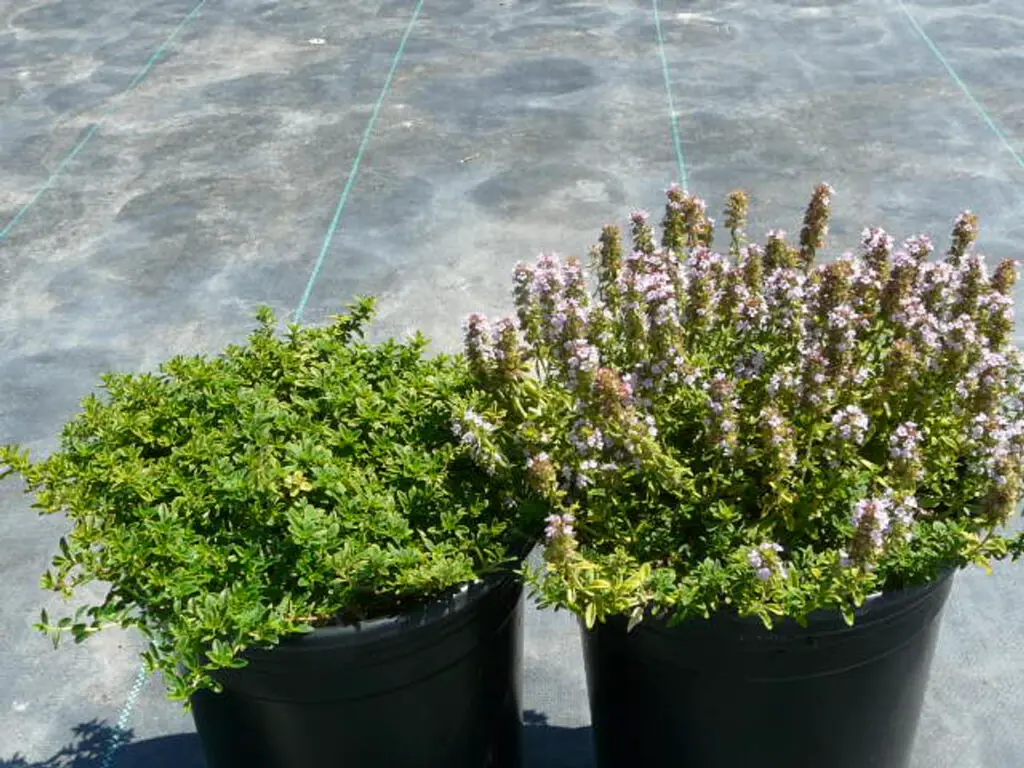
Thyme is not just a culinary herb but also an essential component of integrated pest management. Its robust aroma and essential oils are effective at masking the scent of nearby plants, confusing pests and minimizing their damage. Regular pruning encourages dense growth and extends the plant’s longevity.
- Ideal Conditions: Thrives in full sunlight and prefers well-drained, sandy, or rocky soils with a pH level between 6.0 and 8.0. Thyme is drought-tolerant once established and requires minimal watering, making it a low-maintenance addition to any garden.
- Repels: Whiteflies, cabbage loopers, and tomato hornworms. The fragrant oils in thyme act as a natural deterrent to many common garden pests.
- Companion Planting: Works well when paired with tomatoes, peppers, and eggplants, promoting better flavor in these crops and adding a layer of pest protection.
Crushing thyme leaves releases its potent oils for added bug protection.
Integrating Bug-Repelling Plants Into Your Garden or Home:
Plant Placement Matters:
Place pest-repelling plants where they’re most needed—near doorways, patios, or outdoor dining areas. If you’re using them in a vegetable garden, opt for companion planting. For instance, marigolds work exceptionally well when planted around tomatoes to block harmful pests naturally.
Indoor and Outdoor Options:
Bug-repelling plants can thrive in pots both indoors and outdoors. For indoor setups, choose herbs like basil or mint, as they’re low-maintenance and double as great kitchen resources.
Maintenance and Care:
To get the most out of your plants, follow these care tips:
- Watering: Don’t over or under-water. Each plant has specific needs.
- Fertilizing: Use organic fertilizers for healthier, pest-repelling properties.
- Pruning: Regularly remove dead leaves to encourage healthy growth.
Real-Life Success with Bug-Repelling Plants:
Karen’s Backyard Makeover:
Karen from San Diego planted lavender and marigolds near her patio. Within weeks, mosquitoes and flies stopped being an issue, allowing her family to enjoy peaceful outdoor dinners again.
Paul’s Vegetable Garden:
Paul incorporated basil and petunias into his vegetable garden. Not only were pests kept at bay, but his harvest yields doubled year-over-year!
Common Questions About Bug-Repelling Plants:
Do these plants eliminate bugs completely?
No, they help deter them, but for severe infestations, you may need additional measures.
Can I use essential oils instead?
While essential oils derived from plants can work, they require regular reapplication and are less sustainable in the long term.
Are bug-repelling plants safe for pets?
Some plants (like mint and rosemary) are safe for pets, but others, like marigolds, can be toxic when ingested. Always research first.
Transform Your Space with Bug-Repelling Plants:
By integrating these pest-repelling powerhouses into your garden or home, you’ll not only enjoy a more beautiful and inviting space but also reduce your reliance on chemical pesticides. Are you ready to start planting?
Plants to Keep Bugs Away Naturally and more gardening tips and eco-friendly pest control ideas, explore our related guides today!


2 thoughts on “12 Plants to Keep Bugs Away Naturally: Home & Garden Pest-Free!”